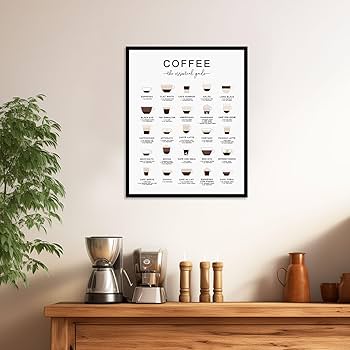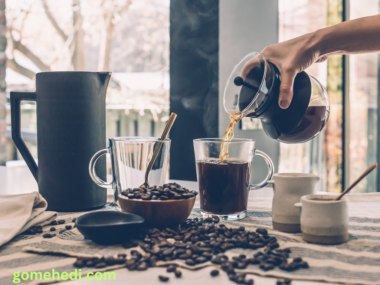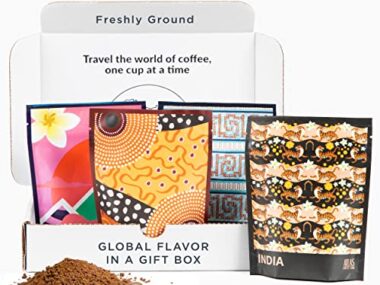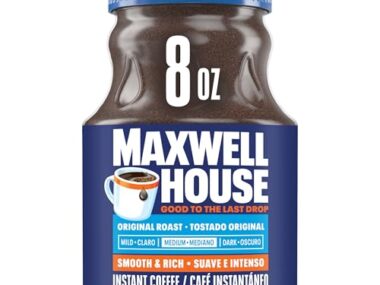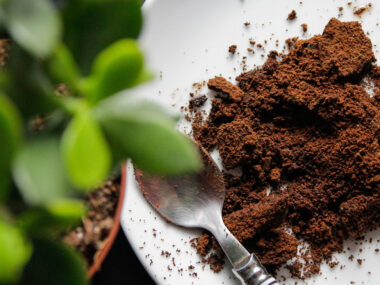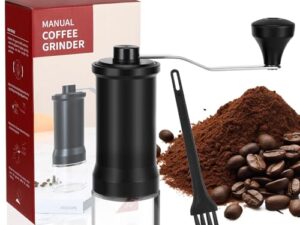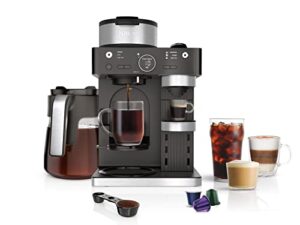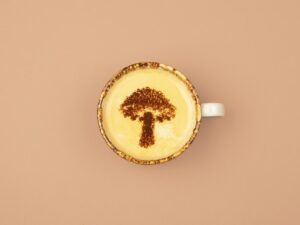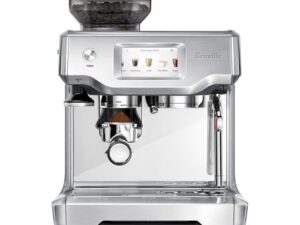A standard cup of coffee typically holds 8 ounces. But the exact amount can vary based on several factors, including cup size and serving standards.
Coffee lovers often wonder about the precise measurement of their favorite brew. While an 8-ounce cup is commonly accepted, many coffee shops use different standards. Some serve in larger cups, others in smaller ones. Understanding these variations can help you make better choices.
Whether you’re brewing at home or ordering at your local café, knowing how many ounces are in a cup of coffee ensures you get the right amount to kickstart your day. Let’s delve deeper into the world of coffee measurements and discover the factors that influence cup sizes. This knowledge will enhance your coffee experience, making each sip more enjoyable.
Coffee Measurement Basics
Do you ever wonder how many ounces are in a cup of coffee? Understanding coffee measurements can make a big difference in your brewing experience. Whether you’re a casual drinker or a coffee enthusiast, knowing the basics helps you get that perfect cup every time. Let’s dive into the essentials of coffee measurement.
Fluid Ounces Explained
Fluid ounces are a measure of volume. They tell you how much liquid is in a container. In the US, one fluid ounce equals about 29.57 milliliters. When you brew coffee, it’s essential to know the amount of liquid you’re using.
Here are some key points about fluid ounces:
- 1 US cup = 8 fluid ounces
- 1 tablespoon = 0.5 fluid ounces
- 1 teaspoon = 0.1667 fluid ounces
For coffee, the standard measurement is usually in cups. But knowing fluid ounces helps with precision. If you’re using a coffee maker, it might have measurements in cups. These cups often refer to 6 fluid ounces, not 8. This can be confusing.
To make it easier, remember:
- 1 cup of coffee (standard) = 6 fluid ounces
- 1 cup of water = 8 fluid ounces
Using the right amount of water and coffee grounds ensures a balanced brew. Too much or too little water can change the taste. Measuring your coffee precisely gives you the best results every time.
Volume Conversions
Converting between different volume measurements can be tricky. But it’s important for making the perfect cup of coffee. Let’s break down some common conversions:
| Measurement | Fluid Ounces | Milliliters |
|---|---|---|
| 1 US cup | 8 fl oz | 237 ml |
| 1 coffee cup | 6 fl oz | 177 ml |
| 1 tablespoon | 0.5 fl oz | 15 ml |
| 1 teaspoon | 0.1667 fl oz | 5 ml |
Understanding these conversions helps you adjust recipes. If a recipe calls for milliliters, you can convert to fluid ounces easily. This ensures you use the right amount of each ingredient.
For example, if a recipe needs 237 milliliters of water, you know this is equivalent to 1 US cup or 8 fluid ounces. This makes it easier to follow recipes and get consistent results.
Using a kitchen scale can also help. Weighing ingredients like coffee grounds ensures accuracy. Many scales can switch between grams and ounces, making conversions simple.
Getting your measurements right is key to brewing delicious coffee. Use these basics to make sure every cup is perfect.

Credit: gossby.com
Standard Cup Size
Ever wondered how many ounces are in a cup of coffee? The answer depends on the standard cup size used in your region. Knowing the standard cup size helps you brew the perfect cup every time. Let’s dive into the details.
Us Vs. Metric Cups
The US and metric systems use different measurements for cups. This can lead to confusion, especially for coffee lovers. Let’s break it down:
US Cup:
- 1 US cup equals 8 fluid ounces.
- Common in the United States and Canada.
Metric Cup:
- 1 metric cup equals 250 milliliters.
- Common in many countries outside the US.
Here’s a quick comparison table:
| Measurement | US Cup | Metric Cup |
|---|---|---|
| Ounces | 8 fl oz | 8.45 fl oz |
| Milliliters | 236.59 ml | 250 ml |
The slight difference may not seem much. But for a precise coffee recipe, it can matter. Always check which system your recipe uses. Measure accurately to get the best taste.
Common Coffee Cup Sizes
Coffee cups come in various sizes. These sizes can affect how much coffee you drink. Here are some common sizes:
- Small: 6-8 ounces. Ideal for a quick coffee fix.
- Medium: 10-12 ounces. Popular choice for regular coffee drinkers.
- Large: 14-16 ounces. Great for those who need more caffeine.
Here’s a more detailed look:
| Size | Ounces | Description |
|---|---|---|
| Small | 6-8 oz | Quick coffee fix, less caffeine. |
| Medium | 10-12 oz | Standard coffee size, balanced taste. |
| Large | 14-16 oz | More coffee, stronger flavor. |
Choose your cup size based on your caffeine needs. Smaller sizes are good for quick drinks. Larger sizes suit those who enjoy sipping coffee over time.
Ounces In Different Coffee Types
Coffee lovers often wonder about the size of their favorite brew. Knowing how many ounces are in a cup of coffee can help you understand your caffeine intake and brewing methods. The number of ounces in a cup of coffee can vary based on the type of coffee you enjoy. Let’s explore the ounces in different coffee types.
Espresso Measurements
Espresso is a concentrated form of coffee, usually served in small amounts. A typical single shot of espresso is about 1 ounce. This small serving packs a punch in terms of flavor and caffeine.
- Single Shot: 1 ounce
- Double Shot: 2 ounces
Many coffee drinks use espresso as a base, and the amount of espresso can vary. For example:
| Coffee Drink | Espresso Ounces |
|---|---|
| Americano | 1-2 ounces + water |
| Latte | 1-2 ounces + milk |
| Cappuccino | 1-2 ounces + milk foam |
Espresso shots are the foundation for many popular coffee drinks. Understanding these measurements can help you customize your coffee to your liking.
Drip Coffee Variations
Drip coffee, also known as brewed coffee, is a staple in many households and cafes. The standard serving size for drip coffee is usually 8 ounces, but this can change based on the cup size and personal preference.
- Small Cup: 6 ounces
- Standard Cup: 8 ounces
- Large Cup: 12 ounces
Some coffee makers offer different brewing settings, which can affect the final volume of coffee. Here are a few common variations:
| Brew Type | Ounces Per Cup |
|---|---|
| Regular Brew | 8 ounces |
| Strong Brew | 6 ounces |
| Weak Brew | 10 ounces |
In summary, drip coffee ounces can vary depending on your preference and the brewing method. Knowing these variations can help you make the perfect cup every time.
Factors Affecting Coffee Volume
Understanding how many ounces are in a cup of coffee is essential for coffee lovers. One factor affecting this is the volume of coffee. Different factors can change the amount of coffee in your cup. Let’s explore them.
Brew Method Impact
The way you brew coffee can change its volume. Some methods use more water, others less. Here are some examples:
- Drip Coffee Maker: This is the most common method. A standard cup from a drip coffee maker holds 8 ounces. But it can vary.
- French Press: This method uses coarser grounds and a longer brew time. A cup of coffee from a French press is typically 8 ounces. But it can be stronger, meaning less volume may be needed.
- Espresso: Espresso is concentrated coffee. A standard shot is 1 ounce. Many coffee drinks use this as a base, adding milk or water.
- Pour-Over: This method allows for precise control over water and coffee. A standard pour-over cup is usually 8 ounces. But it can vary based on preference.
These methods show that the brew method impacts the volume of coffee. Here is a table to summarize:
| Brew Method | Standard Cup Size (Ounces) |
|---|---|
| Drip Coffee Maker | 8 ounces |
| French Press | 8 ounces |
| Espresso | 1 ounce |
| Pour-Over | 8 ounces |
As you can see, different methods change the volume of coffee in your cup. It’s important to understand how your brewing method affects the amount of coffee you drink.
Ingredient Additions
Adding ingredients to your coffee can also change its volume. Here are some common additions:
- Milk or Cream: Adding milk or cream increases the volume. A splash of milk can add 1-2 ounces. A latte with steamed milk can add 6-8 ounces.
- Water: Diluting coffee with water increases volume. An Americano is an espresso with added hot water. This can add 4-6 ounces.
- Ice: Iced coffee has a larger volume due to the ice. The ice can add up to 4 ounces, depending on the size of the cup.
- Syrups and Flavorings: Flavored syrups can add volume. A pump of syrup is about 0.5 ounces. Multiple pumps increase the volume.
Here is a table to show how common additions change coffee volume:
| Ingredient | Volume Added (Ounces) |
|---|---|
| Milk or Cream | 1-8 ounces |
| Water | 4-6 ounces |
| Ice | Up to 4 ounces |
| Syrups | 0.5 ounces per pump |
Understanding how ingredients change the volume is key. It can help you make the perfect cup of coffee. Whether you like it strong or mild, hot or iced, these factors affect your coffee’s volume.
Brewing With Precision
When brewing coffee, precision is key. Knowing exactly how many ounces are in a cup of coffee can make all the difference. It helps you get the perfect balance of flavor and strength. Let’s explore how you can achieve this through accurate measuring and understanding the coffee to water ratio.
Measuring Tools
Using the right measuring tools ensures you get the correct amount of coffee and water. Here are some common tools:
- Kitchen Scale: A digital kitchen scale provides the most accurate measurement. You can measure coffee grounds and water in grams for precision.
- Measuring Cups: Measuring cups are handy for liquid measurements. A standard cup is 8 fluid ounces.
- Scoops: Coffee scoops are designed to measure coffee grounds. One standard scoop usually equals 1 tablespoon or approximately 0.5 ounces.
Here is a simple table to summarize the measurements:
| Tool | Measurement |
|---|---|
| Kitchen Scale | Grams (g) |
| Measuring Cups | Fluid Ounces (fl oz) |
| Coffee Scoop | Tablespoons (Tbsp) |
Using these tools helps maintain consistency. This leads to a better coffee experience every time.
Coffee To Water Ratio
The coffee to water ratio is crucial for brewing the perfect cup. It determines the strength and flavor of your coffee.
A common ratio is 1:16. This means 1 part coffee to 16 parts water. For example, if you use:
- 1 ounce of coffee (28 grams)
- 16 ounces of water (473 milliliters)
This ratio provides a balanced flavor. Adjust the ratio to suit your taste. If you prefer a stronger coffee, use more coffee grounds. For a milder taste, use less.
Here is a simple table to help with conversions:
| Coffee (oz) | Water (fl oz) |
|---|---|
| 1 | 16 |
| 2 | 32 |
| 3 | 48 |
Experiment with different ratios. Find the one that best suits your preference. Consistency is key. Use the same measurements each time for the best results.
Serving Sizes Around The World
Ever wondered why your cup of coffee looks different in various countries? The serving sizes around the world can vary significantly. This difference can be intriguing and sometimes confusing. Understanding these variations can enhance your coffee experience, no matter where you are.
International Standards
Different countries have different standards for coffee serving sizes. In the United States, a standard cup of coffee is typically 8 ounces. This is the size most often used in recipes and nutritional information.
- United States: 8 ounces
- Canada: 8 ounces
- Europe: 5-6 ounces
- Australia: 6 ounces
- Japan: 6.7 ounces
In Europe, a standard cup is usually between 5 to 6 ounces. This smaller size is due to the stronger coffee culture, where a smaller, more concentrated brew is preferred. Meanwhile, in Japan, a standard cup of coffee is about 6.7 ounces, reflecting a balance between the American and European standards.
These variations can affect how you enjoy your coffee. For instance, an 8-ounce cup in the U.S. might feel like too much if you are used to the smaller European servings. Knowing these standards can help you adjust your coffee expectations when traveling.
Cultural Differences
Coffee culture differs widely across the globe. These cultural differences also influence the serving sizes.
In Italy, espresso is the go-to coffee choice. Served in small cups, espresso is usually just 1 ounce. This strong, concentrated coffee is meant to be sipped quickly while standing at a bar.
In contrast, in the United States, coffee is often consumed in larger quantities. Many people enjoy their coffee in 12-ounce or even 16-ounce cups, especially when ordering from coffee chains like Starbucks.
In Turkey, coffee is served in small, 2-ounce cups. Turkish coffee is thick and strong, often sweetened and flavored with cardamom. The serving size reflects the coffee’s intensity.
| Country | Common Serving Size |
|---|---|
| Italy | 1 ounce |
| United States | 12-16 ounces |
| Turkey | 2 ounces |
These cultural preferences highlight the diversity in coffee consumption. Whether you prefer a quick shot of espresso or a large mug to sip on, understanding these differences can enrich your coffee experience.
Common Misconceptions
Many people drink coffee every day, but they don’t always know how many ounces are in a cup of coffee. There are some common misconceptions about this topic. These misconceptions can lead to confusion and incorrect measurements. Let’s clear them up.
Cup Vs. Mug
The terms “cup” and “mug” often cause confusion. They are sometimes used interchangeably, but they are not the same. Understanding the difference is important for measuring coffee accurately.
A standard cup is a unit of measurement. In the U.S., one cup equals 8 fluid ounces. But a mug doesn’t have a standard size. It can hold different amounts of liquid. Mugs are usually larger than cups.
Let’s look at a table to compare:
| Container | Average Size |
|---|---|
| Standard Cup | 8 fluid ounces |
| Small Mug | 8-10 fluid ounces |
| Medium Mug | 10-12 fluid ounces |
| Large Mug | 12-16 fluid ounces |
As you can see, mugs can vary in size. This makes it hard to know exactly how much coffee you’re drinking if you use a mug. To measure coffee accurately, use a standard cup.
Fluid Ounces Vs. Dry Ounces
Another common misconception is about fluid ounces and dry ounces. They are not the same. This can lead to mistakes when measuring coffee.
Fluid ounces measure volume. They are used for liquids, like coffee. Dry ounces measure weight. They are used for dry ingredients, like coffee beans.
Let’s break this down:
- Fluid Ounces: Used for liquids. 1 fluid ounce of water equals about 29.57 milliliters.
- Dry Ounces: Used for dry ingredients. 1 dry ounce of coffee beans equals about 28.35 grams.
To make coffee, you use fluid ounces to measure water. You use dry ounces to measure coffee beans. Mixing these up can ruin your coffee.
Here’s a quick reference:
| Type | Measurement |
|---|---|
| Water for Coffee | Fluid Ounces |
| Coffee Beans | Dry Ounces |
Using the right type of ounces ensures your coffee tastes perfect every time. Keep these tips in mind, and you’ll never be confused again.
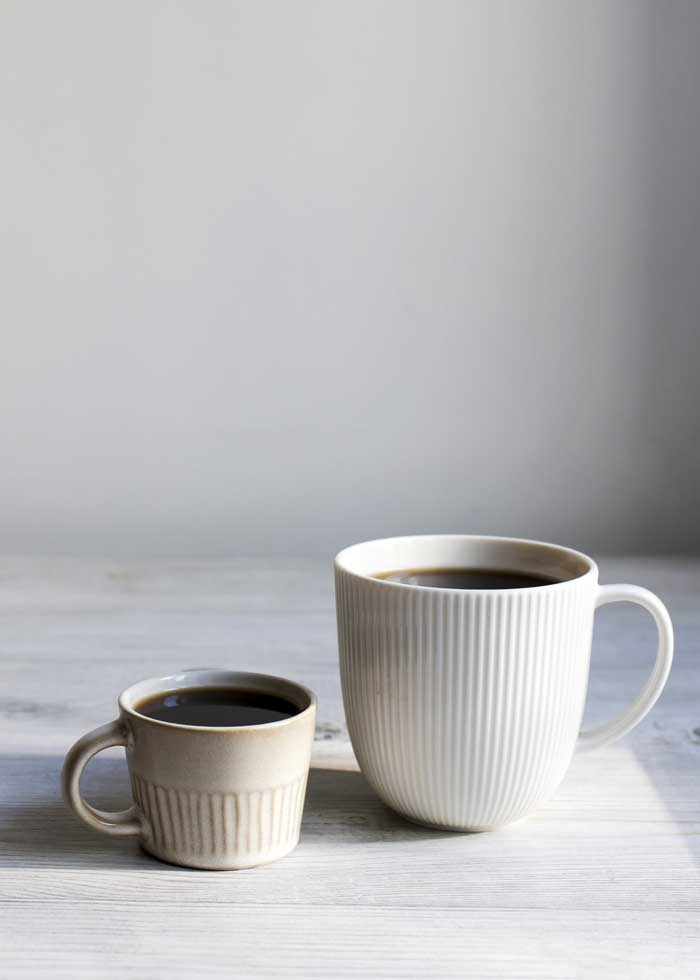
Credit: www.gibbonsfuneralhome.com
Practical Tips For Home Brewing
Brewing the perfect cup of coffee at home can be both a science and an art. Understanding how many ounces in a cup of coffee can help you achieve the ideal taste and strength. Here are some practical tips for home brewing that will enhance your coffee experience.
Adjusting For Taste
Everyone has a unique preference when it comes to coffee strength and flavor. Adjusting the amount of coffee and water you use can help you find your perfect brew.
Here are some tips to help you adjust for taste:
- Start with a standard ratio: A common starting point is 1 to 2 tablespoons of coffee per 6 ounces of water. This is about 10-12 grams of coffee for 180 milliliters of water.
- Experiment with the grind size: The grind size of your coffee beans affects the flavor. Finer grinds produce a stronger taste, while coarser grinds give a milder flavor.
- Adjust the brewing time: A longer brewing time extracts more flavor from the coffee grounds. If your coffee tastes too weak, try increasing the brewing time by 30 seconds.
- Change the water temperature: The ideal water temperature for brewing coffee is between 195°F to 205°F (90°C to 96°C). Too hot or too cold water can affect the taste.
Here’s a simple table to guide you:
| Coffee Amount | Water Amount | Strength |
|---|---|---|
| 1 tbsp (5-6 grams) | 6 oz (180 ml) | Mild |
| 1.5 tbsp (8-9 grams) | 6 oz (180 ml) | Medium |
| 2 tbsp (10-12 grams) | 6 oz (180 ml) | Strong |
Experiment with these factors to find the best combination for your taste.
Scaling Recipes
Once you find the perfect coffee recipe, you might want to brew larger or smaller batches. Scaling your recipe helps you maintain the same taste and strength.
To scale your coffee recipe:
- Determine your desired batch size: Decide how many cups of coffee you want to brew. For example, if you want to make 3 cups, you need to scale your ingredients accordingly.
- Use a consistent ratio: Maintain the same coffee-to-water ratio. If your perfect cup uses 2 tablespoons of coffee per 6 ounces of water, scale this up for larger batches.
- Multiply the ingredients: For 3 cups of coffee, use 6 tablespoons of coffee and 18 ounces of water. This maintains the same strength and flavor.
Here’s a quick reference table:
| Cups of Coffee | Coffee Amount | Water Amount |
|---|---|---|
| 1 cup | 2 tbsp | 6 oz |
| 2 cups | 4 tbsp | 12 oz |
| 3 cups | 6 tbsp | 18 oz |
Scaling recipes ensures your coffee tastes great, no matter the batch size. Use these tips to enjoy consistent, delicious coffee at home.

Credit: www.pens.com
Frequently Asked Questions
Is A Cup Of Coffee 6 Or 8 Oz?
A standard cup of coffee is typically 8 oz. Some coffee makers use a 6 oz measurement per cup. Check your coffee maker’s guidelines.
How Many Ounces Is A Standard Coffee Cup?
A standard coffee cup holds 8 ounces.
How Many Ounces Of Ground Coffee Per Cup?
Use 1 to 2 tablespoons of ground coffee per 6-ounce cup. This equals approximately 0. 35 to 0. 7 ounces. Adjust to taste.
Why Isn’t A Cup Of Coffee 8 Oz?
A cup of coffee isn’t 8 oz because coffee cups typically measure 6 oz. This measurement differs from the standard 8 oz cup.
Conclusion
Understanding the ounces in a cup of coffee helps measure accurately. Most standard cups hold eight ounces. Knowing this ensures consistency in brewing. Enjoy your coffee with the perfect amount each time. Accurate measurements lead to a better-tasting cup. Stay informed and make your coffee experience delightful.
Now, you can brew with confidence and precision. Happy brewing!
